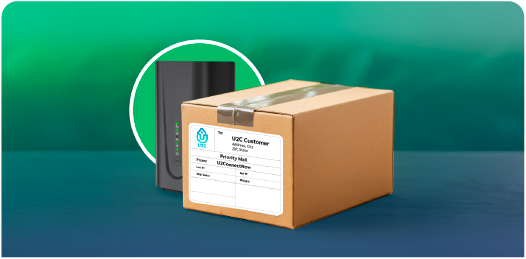Good news: you can check availability in under a minute. Here’s the quick path to a yes/no (and what each result means.



 Open the Coverage Checker
Open the Coverage Checker
u2connectnow.com
 Type your full address
Type your full address
Include apartment/suite and ZIP+4 if you have it.
 Review your options
Review your options
You'll see one or more service types: Fiber, 5G Fixed Wireless (LTE/5G), Cable partner, or Coming Soon.
![]() Fiber (Best overall) - Fastest speeds and the lowest latency, great for multi device homes, gamers, and heavy uploaders
Fiber (Best overall) - Fastest speeds and the lowest latency, great for multi device homes, gamers, and heavy uploaders
![]() 5G Fixed Wireless (LTE/5G) - Fast, reliable, quick self install. Ideal where fiber/cable aren't available.
5G Fixed Wireless (LTE/5G) - Fast, reliable, quick self install. Ideal where fiber/cable aren't available.
![]() Cable partner Solid download speeds and wide availability, uploads may be lower.
Cable partner Solid download speeds and wide availability, uploads may be lower.
![]() Coming Soon - We're bulding toward your area. Join the waitlist to get notified first.
Coming Soon - We're bulding toward your area. Join the waitlist to get notified first.


![]() New builds & rural addresses: If your street is brand new or not in GPS yet, try a nearby neighbor's address to gauge coverage, then contact us to confirm.
New builds & rural addresses: If your street is brand new or not in GPS yet, try a nearby neighbor's address to gauge coverage, then contact us to confirm.
![]() Apartment/condo: Add your unit number; some buildings are serviceable only on certain floor/stacks.
Apartment/condo: Add your unit number; some buildings are serviceable only on certain floor/stacks.
![]() Moving soon? Check both current and future addresses-you can transfer service later.
Moving soon? Check both current and future addresses-you can transfer service later.
![]() Join the waitlist: We'll alert you the moment service lights up.
Join the waitlist: We'll alert you the moment service lights up.
![]() Ask about alternatives: In some areas we can offer a mobile hotspot/bridge until primary service arrives.
Ask about alternatives: In some areas we can offer a mobile hotspot/bridge until primary service arrives.
![]() Neighborhood interest helps: Share the checker with your neighbors-demand can speed up buildouts.
Neighborhood interest helps: Share the checker with your neighbors-demand can speed up buildouts.



Subscribe to our newsletter